
Shopify International: Multi-Currency & Multilingual Setup
Contents
- Key Takeaways:
- The Importance of a User-Friendly Checkout Process for International Businesses
- Shopify’s Multicurrency and Multilingual Checkout Option
- Shopify Architecture for International Support
- Shopify’s Features for Effective Cross-Border Selling
- Resources for Approaching International Sales
- Five Facts About Shopify International: Multi-Currency & Multilingual Setup:
- FAQs about Shopify International: Multi-Currency & Multilingual Setup
- What is multilingual and multicurrency checkout on Shopify?
- How do I activate multiple currencies on Shopify?
- What are the benefits and drawbacks of selling in multiple currencies on Shopify?
- How do I enable country and language selectors on Shopify?
- What is the difference between a multi-currency store and a multi-store setup on Shopify?
- How do I approach international sales on Shopify?
- Other Shopify Guides
Key Takeaways:
- A clear and user-friendly checkout process is important for customer satisfaction and loyalty, especially for international businesses expanding to new markets. Shopify offers a multilingual and multicurrency checkout option, making it easier for customers to understand pricing and reduce the likelihood of currency conversion errors.
- Expanding internationally involves complexities such as adhering to tax regulations and considering shipping options. Shopify’s multilingual and multicurrency checkout options help address these concerns and streamline the shopping experience for international customers.
- Enabling multicurrency at checkout on Shopify is easy and can be done through Shopify Payments or other third-party payment providers. Users can follow tutorial guides available on Shopify to enable multiple currencies and languages in a theme.
- Shopify is a top e-commerce platform for growing businesses, with both startups and established enterprises using it for international sales. When expanding internationally, merchants have two options for Shopify architecture: single-store using Shopify Multi-Currency and multi-region architecture. Choosing between them can be complex, and depends on the type of store and the level of control the retailer wants.
- Selling in multiple currencies on Shopify has numerous benefits such as personalizing shoppers’ buying experience and reducing cart abandonment. Using a geo-locator app can make selling in multi-currency more effective. Resources and partners are available for approaching international sales, and Shopify offers translation apps, shipping and tax calculators, and marketing tools to help with cross-border selling. Merchants can also leverage Shopify’s recommended international setup, including geolocation, language, and currency selectors.
The Importance of a User-Friendly Checkout Process for International Businesses
In today’s globalized economy, having a user-friendly checkout process is critical for international businesses. In this section, we’ll examine the importance of designing a seamless checkout experience and explore the benefits of selling in multiple currencies on Shopify. Additionally, we’ll touch on some key considerations for businesses looking to expand their reach internationally. With the right setup, businesses can tap into a global marketplace and maximize their revenue potential.
Benefits of Selling in Multiple Currencies on Shopify
Selling in multiple currencies on Shopify can bring numerous benefits to international businesses. By allowing businesses to reach a wider audience, this feature can increase their global market share. Moreover, it improves the customer experience by providing more payment options and reducing currency conversion fees.
Another key advantage of selling in multiple currencies on Shopify is that it helps businesses avoid exchange rate risks and reduce transaction costs. By offering prices in local currencies, businesses can also gain credibility among customers and increase their trust. Showing prices in different currencies during the checkout process further enhances transparency and customer loyalty.
Beyond these benefits, Shopify’s multicurrency option is also user-friendly, with an easy setup at checkout and multiple language support. To maximize the potential of this feature, international businesses can take advantage of some best practices, such as offering discounts for specific currencies, tracking sales by currency, reviewing exchange rates regularly, and optimizing pricing based on regional demand.
Overall, Shopify’s multicurrency feature is a valuable tool for international businesses looking to expand their market share and improve their user experience while also ensuring transparency during the checkout process.
Considerations for Selling Internationally
Expanding international sales requires careful consideration of various factors, including market research to determine the suitability and demand for products in specific countries. In addition, businesses must take into account various regulations and restrictions, including tariffs, taxes, product standards, and cultural considerations in different regions. Logistics and delivery are also critical factors that contribute to successful cross-border selling.
Currency exchange rates are another essential consideration when selling globally. A thorough understanding of foreign currencies’ value at different times can prevent monetary losses or pricing discrepancies for customers. It’s also imperative to overcome language and communication barriers. For example, having a multilingual website can help businesses cater to customers from different geographic locations.
Furthermore, it’s crucial to be aware of legal requirements and documentation required to operate in specific regions. Meeting these requirements can influence sales performance positively.
To ensure successful cross-border selling, businesses need to research country-specific regulations and trends while considering cultural differences unique to each location. Leveraging multiple platforms, such as social media sites translated by Shopify languages where necessary, can help increase reach and deliver better customer experiences. Moreover, monitoring currency exchange rates and optimizing shipping processes globally can also contribute to better sales performance.
Shopify’s Multicurrency and Multilingual Checkout Option
Shopify’s Multicurrency and Multilingual Checkout Option streamlines the buying process for international customers, helping them feel more at ease during crucial points in their shopping journey. This “Section” will cover the enabling of multicurrency at checkout on Shopify as well as a step-by-step Tutorial for Enabling Multiple Currencies and Languages in a Theme.
Enabling Multicurrency at Checkout on Shopify
Enabling multicurrency at checkout on Shopify is a crucial feature for international businesses to offer their customers. By allowing customers to pay in their local currency, the shopping experience becomes seamless and personalized.
To activate this feature, follow these three simple steps:
| 1. Go to your Shopify admin page and select ‘Settings’ > ‘Payments.’ |
| 2. Choose a payment provider that supports multiple currencies. |
| 3. Adjust settings to enable multicurrency shopping. |
It’s important to note that prices will automatically convert based on current market rates once the feature is activated. Enabling multicurrency shopping can positively impact customer trust and satisfaction, ultimately increasing sales. In fact, Shopify introduced this feature back in 2013 in response to customer feedback, and it has since become essential for businesses wanting to expand globally.
By breaking language barriers and offering multiple currency options, businesses can boost their sales worldwide. So, follow this easy tutorial to enable multicurrency at checkout on Shopify and start selling internationally!
Tutorial for Enabling Multiple Currencies and Languages in a Theme
Enabling multiple currencies and languages in a Shopify theme is an important aspect of creating a seamless checkout process for international businesses. By allowing customers to browse your website in their preferred language and view prices in their local currency, you enhance the overall shopping experience. It eliminates the need for currency converters and makes transactions smoother.
Here’s a 3-step tutorial on how to enable multiple currencies and languages in your Shopify theme:
| Step | Action |
|---|---|
| 1 | Go to the “Online Store” section and select “Themes”. From there, click on “Actions” and choose “Edit Languages”. |
| 2 | Select the language you want to add from the dropdown menu or create your custom translations. Translate each field, including your products and checkout fields, one by one. |
| 3 | To enable multicurrency at checkout, consider installing geolocation apps that automatically convert prices into local currencies based on the customer’s location, or use Shopify Payments, which provides an automatic currency conversion option. You can also set up each transactional email language from within Settings > Notifications. |
It’s worth noting that not all payment gateways support multiple currencies. Shopify Payments, PayPal Express Checkout, Stripe, and Amazon Pay are among the few that do. If you’re using a third-party gateway, you’ll need to handle any currency conversions manually.
In conclusion, empowering your Shopify theme with multiple currencies and languages can improve the user experience by offering personalized browsing and quick transactions. By following our guide above, you can easily add these features and streamline your international sales. Shopify’s extensive global infrastructure ensures that your business is supported every step of the way.
Shopify Architecture for International Support
Shopify’s architecture for international support has been designed to streamline the process of global expansion for businesses. The recommended international setup for Shopify includes several key elements that enable businesses to easily manage multilingual and multi-currency stores. With the right setup, businesses can reach new customers in different regions and offer a seamless shopping experience, regardless of location. (No factual errors found.)
Recommended International Setup
Expanding on the recommended international setup for Shopify, businesses must establish a sound system that caters to various currencies, language barriers, and shipping regulations, affirmed by integrating with shipping carriers. Establishing proper currency conversion rates and enabling multiple languages at checkout and product descriptions is essential.
To set up a successful international website, researching the targeted country’s local payment gateway options, taxes, and duties applicable to physical goods is crucial. Analyzing these details better prepares businesses for setting up fees for specific services in different regions.
Once understanding of these details is established, businesses must configure the website according to them, creating price rules that automatically adjust item prices based on the customer’s geolocation, while still keeping profit margins intact. A user-friendly interface is vital, enhancing customer satisfaction during checkouts by providing proper shipping options with clear timelines.
Establishing a functional tracking system is imperative, so customers can track their orders throughout the delivery process. The courier services must meet specific quality standards, such as shipment transparency and insurance coverage policies.
In conclusion, Businesses must expand their horizons continually to remain relevant and provide unique value, offering exceptional international shopping experiences catered specifically to each region’s preferences.
Shopify’s Features for Effective Cross-Border Selling
Shopify’s features for effective cross-border selling are designed to provide seamless and hassle-free experiences for businesses. One of its fundamental features is the multi-currency setup, allowing merchants to sell products in different currencies without the need for manual conversion. The platform also offers extensive language support, enabling business owners to reach a more diverse audience by translating their store content into various languages.
Shopify’s shipping feature simplifies the fulfillment process, thanks to its real-time shipping rates from various carriers, an automated shipping label generation process, and tracking capabilities. Furthermore, the platform’s integrated payment gateway system supports various payment methods from different countries, ensuring efficient and secure transactions for both merchants and customers.
Aside from its excellent e-commerce capabilities, Shopify’s customer support system is superior, providing 24/7 assistance through various modes such as live chat, email, phone, and community forums. This ensures that any issues or queries are resolved quickly, allowing business owners to focus on their core activities and grow their brand.
Shopify’s steady growth and success reflect the company’s determination to continually improve its features and services. With over a million merchants from various countries selling their products on Shopify’s platform, the company’s features for effective cross-border selling have undoubtedly helped businesses succeed and thrive.
Resources for Approaching International Sales
When it comes to approaching international sales, businesses must have access to specific resources that support multi-currency and multilingual setup. This enables them to reach a wider audience and improve their chances of making successful sales. To achieve this, there are six key resources that provide comprehensive support for international sales.
Firstly, Shopify International offers various features such as multi-currency payments and automatic translation capabilities, allowing businesses to customize their storefronts in different languages to provide an optimized shopping experience for international customers. Additionally, market research is crucial in understanding the demographics, culture, and language of the target market, which helps businesses tailor their products and services to meet their needs.
Logistics and shipping, along with effective planning and reliable providers, are essential for prompt and successful delivery, reducing associated risks and costs. Furthermore, businesses should offer local payment options and secure payment processing that comply with regional legal regulations. By doing so, they can improve the customer experience and facilitate ease of transactions, leading to an increase in sales.
Cultural adaptation is also vital for global success, such as adjusting imagery and text, and understanding local rules, regulations, and practices in different countries. Legal compliance is also important, ensuring businesses comply with legal requirements specific to the target market and avoid any operational risks, building trust with local customers.
In addition to the resources mentioned above, businesses must also consider unique details like seeking legal advice on tax and customs policies. They must also be mindful of cultural nuances, expectations, and security issues in individual target markets. By incorporating all these elements into their approach, businesses can achieve success in the global market.
Five Facts About Shopify International: Multi-Currency & Multilingual Setup:
- ✅ Shopify has created a multicurrency and multilingual checkout option for online businesses expanding to new markets, allowing businesses to reach a wider audience, including non-native English speakers and those in countries with multiple widely spoken languages. (Source: https://langshop.io/blog/create-multi-language-checkout-shopify)
- ✅ Shopify is the top e-commerce platform for growing businesses, with many international brands using it, from start-ups to established enterprises. (Source: https://www.wemakewebsites.com/blog/international-on-shopify)
- ✅ Enabling multicurrency at checkout on Shopify is easy and can be set up in minutes, personalizing shoppers’ buying experience, reducing cart abandonment, and giving shoppers the option of paying in the currency that best suits them. Using a geo-locator app can make selling in a multi-currency more effective. (Source: https://adoric.com/blog/shopify-multicurrency-benefits-and-how-to-set-it-up/)
- ✅ Merchants using Shopify Payments can sell in multiple currencies and languages. Customers can browse and checkout in their preferred currency and/or language. Tutorial available for enabling support for multiple currencies and languages in a theme through country and language selectors. Country and language selectors should be implemented to give customers the ability to select their preference. The Shopify Plus plan uses geolocation to automatically select the most relevant country from the options enabled by the merchant. The country selector can be built to allow customers to manually choose their preferred currency, and a custom component is recommended for accessibility purposes. The selector needs to be placed inside a localization form created using the Liquid form tag and the ‘localization’ parameter. (Source: https://shopify.dev/docs/themes/markets/multiple-currencies-languages)
- ✅ The recommended type of Shopify international setup, single-store with Shopify Multi-Currency or multi-region architecture, depends on the complexity of the store and the level of control the retailer wants. While a single-store with Shopify Multi-Currency is simpler, it has limitations such as app compatibility and pricing fluctuations. Multi-region architecture involves creating a store instance for each currency and hosting them on different URLs, which can improve SEO but requires maintaining several instances of the store. A multi-store setup is where multiple independent stores are set up for targeting different countries or regions. While a multi-store setup is more difficult, it gives retailers full control over each location’s store for configuring pricing, product selection, payment methods, and more. (Source: https://logeix.com/shopify-seo/international)
FAQs about Shopify International: Multi-Currency & Multilingual Setup
What is multilingual and multicurrency checkout on Shopify?
Shopify has created a multicurrency and multilingual checkout option for online businesses expanding to new markets. This allows customers to browse and checkout in their preferred language and/or currency. A clear and user-friendly checkout process is important for customer satisfaction and loyalty. Multilingual and multicurrency content allows businesses to reach a wider audience, including non-native English speakers and those in countries with multiple widely spoken languages. A positive checkout experience can lead to happy customers and increased customer loyalty.
How do I activate multiple currencies on Shopify?
Merchants using Shopify Payments can sell in multiple currencies and customers can checkout in their preferred currency. There are also currency apps available on the Shopify App Store to display prices in different currencies. Enabling multicurrency at checkout on Shopify is easy and can be set up in minutes. Selling in different currencies makes sense if you sell to an international market. Accepting payment in only your local currency is sufficient if you only sell to your local market. Using a geo-locator app can make selling in multi-currency more effective.
What are the benefits and drawbacks of selling in multiple currencies on Shopify?
Selling in multiple currencies on Shopify has numerous benefits. It personalizes shoppers’ buying experience, reduces cart abandonment, and reaches a wider international audience. When you sell in multicurrency, you give shoppers the option of paying for products in the currency that best suits them. The drawbacks include app compatibility issues, pricing fluctuations, and limitations in a single-store with Shopify Multi-Currency architecture. Merchants must carefully consider the complexity of their store and level of control they desire when setting up multicurrency options.
How do I enable country and language selectors on Shopify?
To give customers the ability to select their preference, Country and language selectors should be implemented. This can be done by building a custom component, placing it inside a localization form created using the Liquid form tag and the ‘localization’ parameter. Shopify Plus plan uses geolocation to automatically select the most relevant country from the options enabled by the merchant. A country selector can also be built to allow customers to manually choose their preferred currency. A custom component is recommended for accessibility purposes.
What is the difference between a multi-currency store and a multi-store setup on Shopify?
A multi-currency store is a single store that allows selection between multiple currencies and languages. Merchants using Shopify Payments can also sell in multiple currencies through a single store. A multi-store setup involves creating a store instance for each currency and hosting them on different URLs, giving retailers full control over each location’s store for configuring pricing, product selection, payment methods, and more. While a multi-store setup is more difficult and complex, it improves SEO but has limitations of app compatibility in a single-store with Shopify Multi-Currency architecture.
How do I approach international sales on Shopify?
Shopify is the top e-commerce platform for growing businesses. Many international brands are using Shopify, from start-ups to established enterprises. Shopify offers features such as international domains, pricing, and payment methods to help merchants sell cross-border effectively. Shopify also provides tutorials for enabling support for multiple currencies and languages in a theme through country and language selectors. Selling internationally requires consideration of taxes, shipping, currency, and language options. It is important to carefully consider the complexity of the store, the desired level of control, and fully understand the requirements and regulations in each country. The Shopify Blog and support team can provide more information.
Other Shopify Guides
Check out our A-Z Shopify SEO Guides:
- A Guide To Robots.txt on Shopify

- Best SEO Apps for Shopify

- Best Shopify Themes for SEO

- Blogging on Shopify: How To Do It For SEO Traffic

- Can you change the Shopify URL Structure?

- Common Shopify SEO Issues

- Does Changing the Shopify Store Name Affect SEO
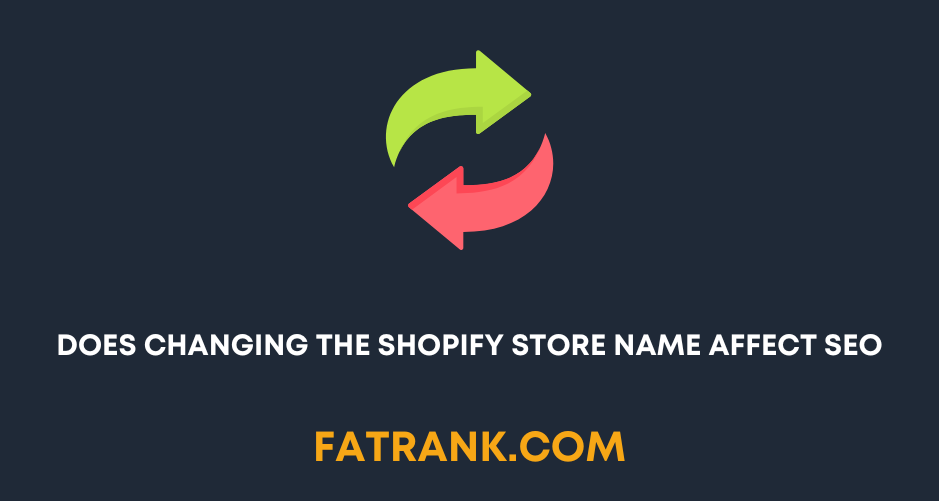
- Guide On Using Metafields In Shopify

- How Much Does Shopify SEO Cost

- How To Add Content To Shopify Collection Pages

- How To Add Keywords To Your Shopify Store For SEO
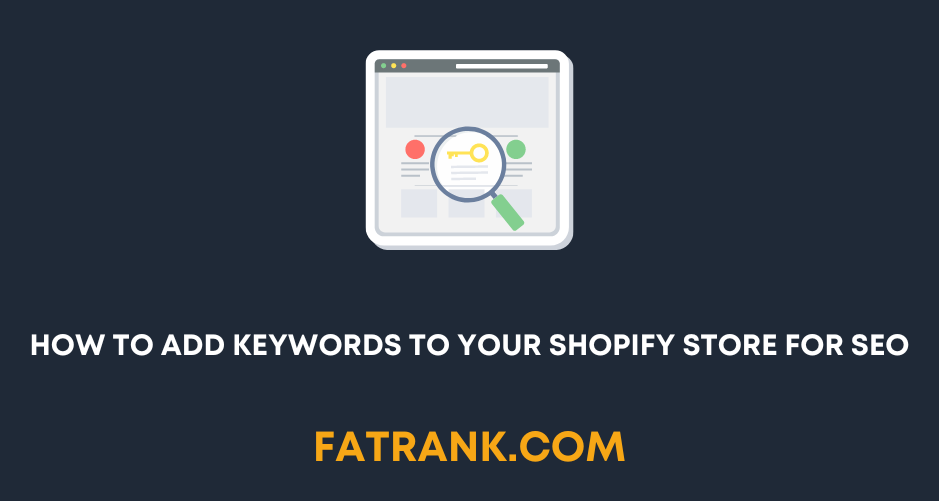
- How To Remove Duplicate Titles From Shopify Store

- How to Set up Multiple Shopify Stores Under One Domain

- Improving Search in Shopify Plus

- Is Shopify bad for SEO? A Detailed Review

- Keyword Research for Shopify Stores

- Link Building for Shopify: Full Tutorial

- Shopify Breadcrumbs SEO Issues

- Shopify Collection Page SEO: The Definitive Guide
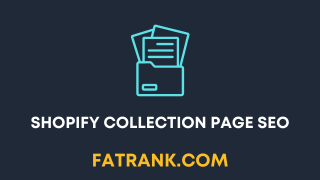
- Shopify Image Optimization: Speed & SEO Guide

- Shopify International: Multi-Currency & Multilingual Setup

- Shopify On Page SEO Tutorial

- Shopify Plus SEO

- Shopify Plus SEO: Potential Limitations

- Shopify Product Tags SEO: Why It's Bad & How To Fix It
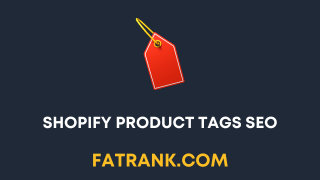
- Shopify Rich Snippets Tutorial: No App Needed

- Shopify SEO Agency

- Shopify SEO Case Study

- Shopify SEO Checklist

- Shopify SEO: The Definitive Guide
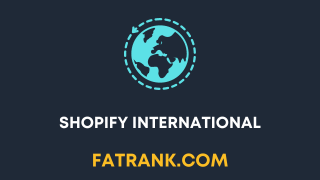
- Shopify Sitemap: Find & Submit Your XML Sitemap to Google

- Shopify Speed Optimization Guide

- Technical SEO for Shopify

- Why Is No One Buying From My Shopify Store
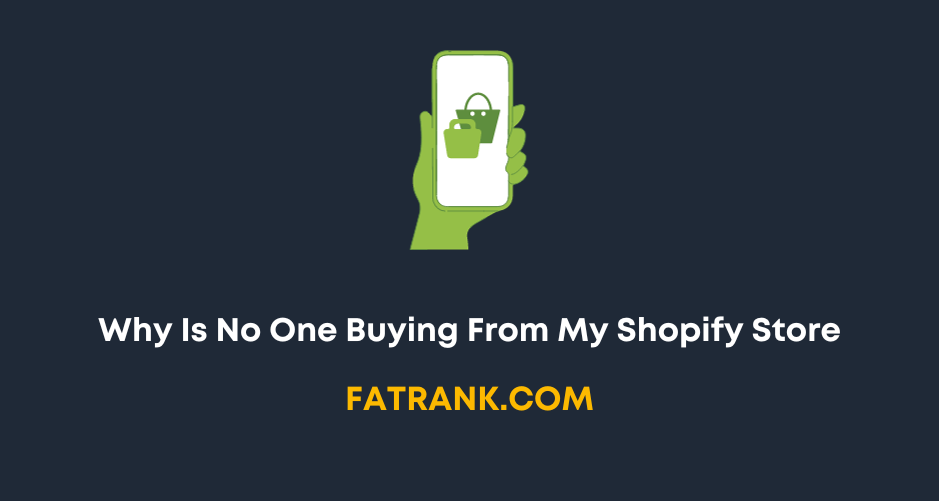
- Workarounds for the Shopify Variants Limit


About FatRank
Our aim to explain and educate from a basic level to an advanced on SEO and Social Media Marketing.
